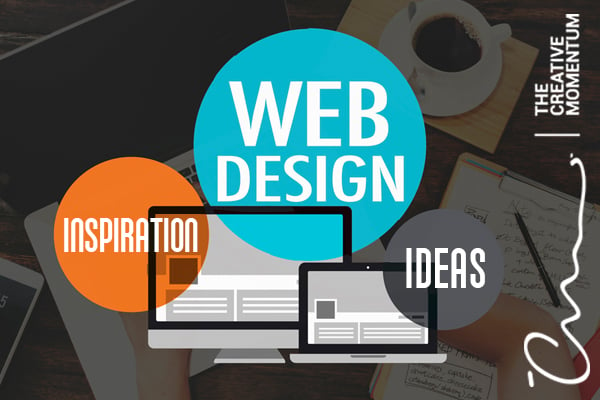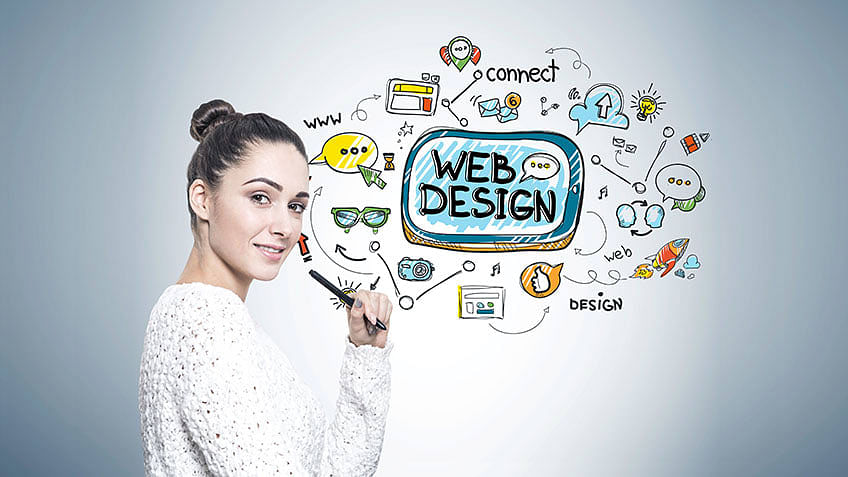The Ideal Types of Website Design to Improve User Experience and Interaction
In the ever-evolving landscape of digital communication, the effectiveness of Web layout substantially influences individual experience and involvement. Various layout methods, such as minimal, receptive, and interactive designs, each deal unique benefits that can satisfy varied individual demands. Comprehending which sorts of Web design finest offer these objectives can be essential for organizations aiming to improve consumer satisfaction and retention. The inquiry remains: which style components truly reverberate with customers and foster purposeful interaction? The exploration of these concepts reveals vital insights that may redefine your method to Web design.
Minimal Web Layout
As electronic landscapes end up being progressively messy, minimalist website design has actually emerged as a powerful method to improving individual experience. This design approach focuses on simpleness, concentrating on vital elements while getting rid of unneeded distractions. By using enough white area, simple navigating, and a restricted color scheme, minimal style fosters quality and guides individual attention to vital material.
The core concept of minimal website design is to produce a seamless communication for users. By minimizing cognitive lots, individuals can swiftly realize information without feeling overwhelmed. This direct strategy not just improves functionality yet additionally encourages interaction, as site visitors are most likely to check out a site that is aesthetically appealing and very easy to browse.
In addition, minimal design typically stresses typography and images, utilizing these elements tactically to communicate messages properly. In essence, minimalist Web style is not simply a trend; it is a thoughtful methodology that acknowledges the value of user-centered layout.
Receptive Website Design
In today's diverse digital environment, responsive Web design has ended up being necessary for producing a smooth customer experience throughout a plethora of devices. As users access web sites on smartphones, laptops, desktop computers, and tablet computers, the capacity of a website to adapt its design and web content to various screen sizes and resolutions is vital.
Receptive Web layout utilizes adaptable grids, pictures, and CSS media questions to make certain that Web material exists ideally, no matter the tool used. This method not only boosts the visual charm of an internet site but also considerably boosts usability. Users are most likely to involve with a website that offers a consistent experience, as it gets rid of the irritation of needing to focus or scroll excessively.
Furthermore, internet search engine, including Google, prioritize mobile-friendly websites in search rankings. By taking on responsive design, services can enhance their visibility and reach a broader target market. This technique additionally simplifies website upkeep, as a single version of the website can accommodate all gadgets, lowering the requirement for multiple versions. In recap, receptive website design is a fundamental technique that enhances individual experience, interaction, and total fulfillment.
Interactive Web Design
Receptive Web design prepares for improving customer experience, yet interactive website design takes this an action additionally by involving users in a more dynamic means - Aligned Position Web Design. By integrating components such as computer animations, clickable models, and real-time feedback, interactive Web style astounds customers, attracting them right into a richer surfing experience
This approach not only fosters engagement yet also motivates individuals to check out material proactively instead of passively consuming it. Methods such as gamification, where individuals make benefits for finishing jobs, can significantly enhance the time invested in a site and improve overall complete satisfaction. Interactive functions can streamline complicated information, making it much more enjoyable and absorbable.

Integrating interactive layout aspects can additionally lead to higher conversion prices, as users are more probable to engage with a site that proactively involves them. Aligned Position Web Design. Eventually, interactive Web design transforms individual experiences right into memorable journeys, making certain that visitors return time and once again
Flat Design
Identified by its minimalistic strategy, flat style highlights simplicity and functionality, stripping away unnecessary aspects and focusing on necessary attributes. This style approach focuses on functionality, making sure that customers can browse user interfaces easily and efficiency. By employing a clean aesthetic, level layout removes the mess commonly discovered in extra elaborate designs, consequently improving individual concentrate on content and functionality.
The characteristic of level style hinges on its use vibrant shades, basic typography, and geometric shapes. These elements add to a visually enticing user interface that is both approachable and modern-day. Furthermore, flat design cultivates a sense of clarity, permitting customers to determine important actions and details without diversion.
Additionally, find more level layout is especially reliable in responsive Web style, as its simpleness translates well across numerous devices and screen dimensions. By concentrating on essential functions, level layout not only satisfies individual demands but likewise motivates smooth communication, making it a vital element of efficient Web design techniques.
Adaptive Web Layout
Flexible Web layout customizes the user experience by producing several dealt with formats customized to various display dimensions and gadgets. Unlike receptive layout, which fluidly readjusts a solitary layout, adaptive design employs distinct layouts for particular breakpoints, making sure ideal presentation on different platforms. This technique enables designers to focus on the special attributes of each gadget, improving functionality by providing exactly what users need based on their context.
One of the key benefits of flexible Web style is its ability to optimize load times and performance. By serving customized web content and photos that fit the individual's gadget, web sites can reduce data usage and improve loading speeds. This is specifically beneficial for individuals with slower connections or restricted data plans.

Additionally, flexible style helps with a more controlled and regular branding experience. Considering that designers produce numerous formats, they can make sure that the visual components align with the brand name's identification throughout different platforms - Aligned Position Web Design. This results in a natural user experience, enhancing engagement and advertising customer retention
Final Thought
In conclusion, the assimilation of minimal, responsive, and interactive Web layout concepts considerably improves customer experience and involvement. Minimal style promotes quality and emphasis, while responsive style makes certain flexibility across various devices, promoting accessibility. Interactive design captivates users through dynamic aspects, motivating expedition and customization. Jointly, these style comes close to add to the development of user-friendly settings that not just enhance contentment yet additionally drive greater conversion prices, emphasizing their essential importance in modern website design methods.

Minimal layout cultivates clarity and focus, while responsive design guarantees versatility across different gadgets, advertising access. Jointly, these style comes close to add to the production of user-friendly environments that not only improve complete satisfaction however likewise drive higher conversion rates, underscoring their crucial significance in contemporary company website Web design strategies.